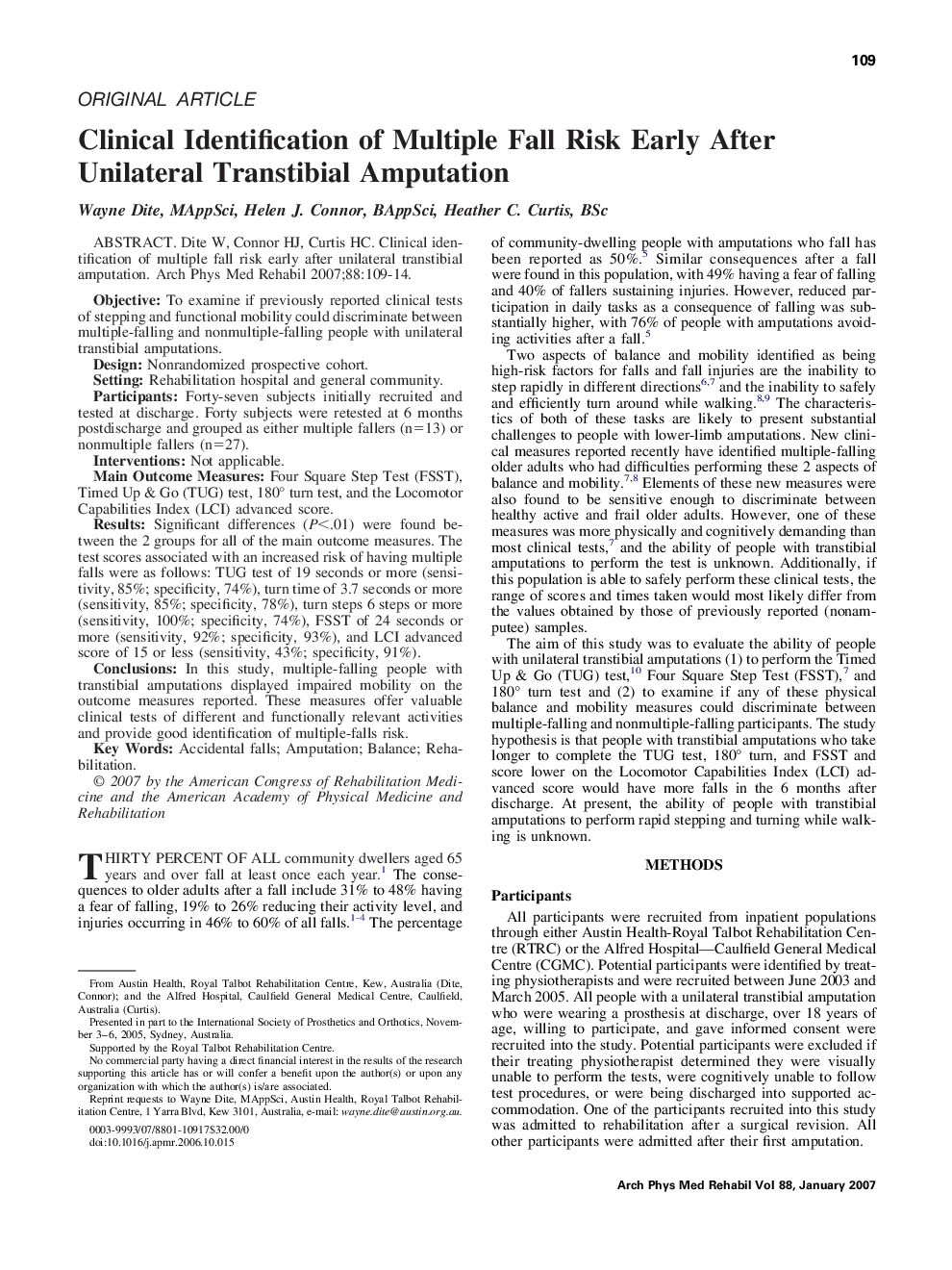| Article ID | Journal | Published Year | Pages | File Type |
|---|---|---|---|---|
| 3451582 | Archives of Physical Medicine and Rehabilitation | 2007 | 6 Pages |
Dite W, Connor HJ, Curtis HC. Clinical identification of multiple fall risk early after unilateral transtibial amputation.ObjectiveTo examine if previously reported clinical tests of stepping and functional mobility could discriminate between multiple-falling and nonmultiple-falling people with unilateral transtibial amputations.DesignNonrandomized prospective cohort.SettingRehabilitation hospital and general community.ParticipantsForty-seven subjects initially recruited and tested at discharge. Forty subjects were retested at 6 months postdischarge and grouped as either multiple fallers (n=13) or nonmultiple fallers (n=27).InterventionsNot applicable.Main Outcome MeasuresFour Square Step Test (FSST), Timed Up & Go (TUG) test, 180° turn test, and the Locomotor Capabilities Index (LCI) advanced score.ResultsSignificant differences (P<.01) were found between the 2 groups for all of the main outcome measures. The test scores associated with an increased risk of having multiple falls were as follows: TUG test of 19 seconds or more (sensitivity, 85%; specificity, 74%), turn time of 3.7 seconds or more (sensitivity, 85%; specificity, 78%), turn steps 6 steps or more (sensitivity, 100%; specificity, 74%), FSST of 24 seconds or more (sensitivity, 92%; specificity, 93%), and LCI advanced score of 15 or less (sensitivity, 43%; specificity, 91%).ConclusionsIn this study, multiple-falling people with transtibial amputations displayed impaired mobility on the outcome measures reported. These measures offer valuable clinical tests of different and functionally relevant activities and provide good identification of multiple-falls risk.
